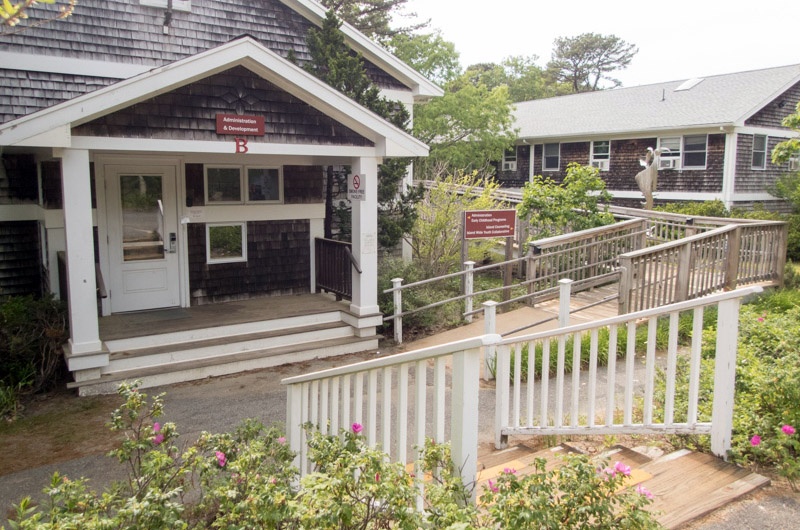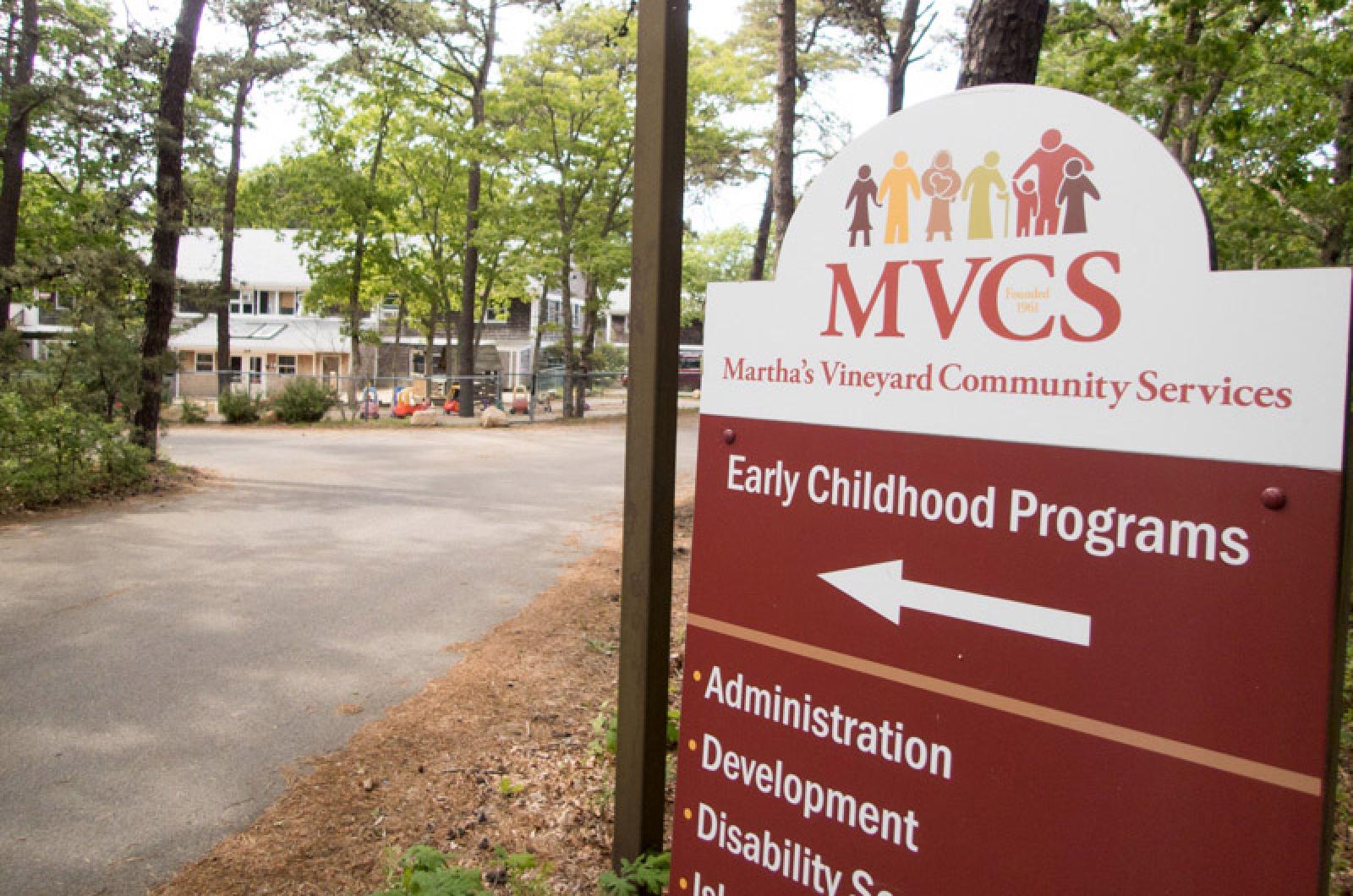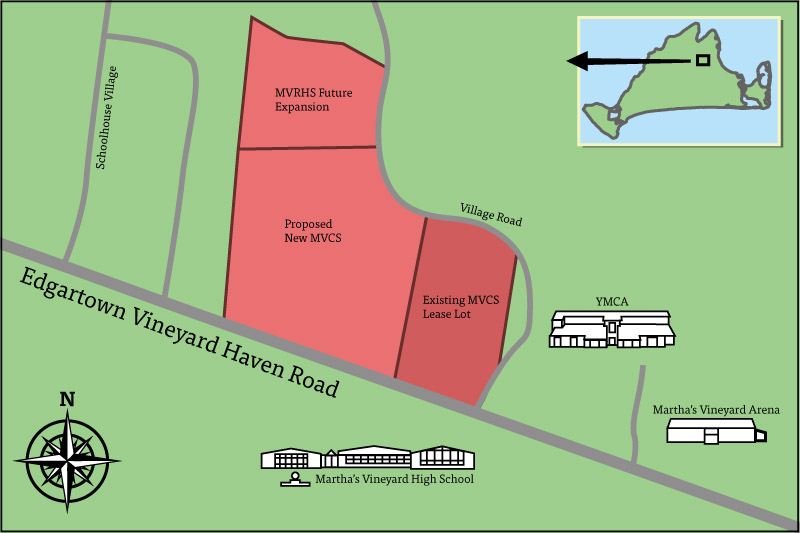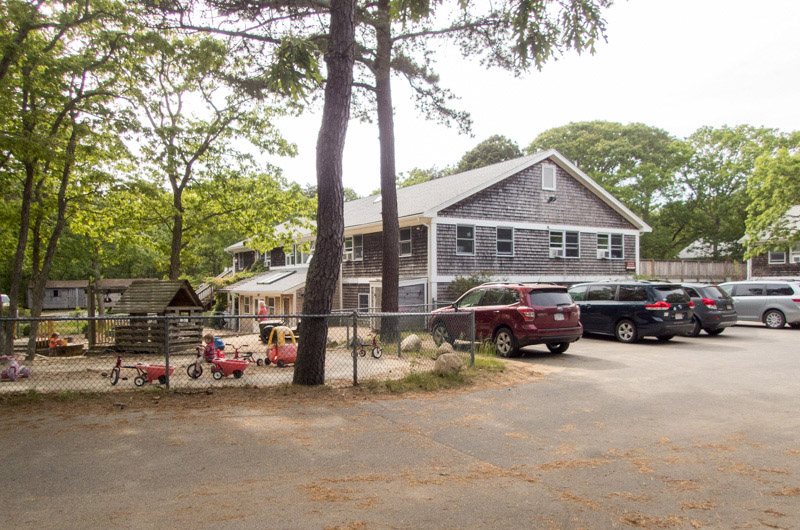Leaders at Martha’s Vineyard Community Services this week quietly unveiled future plans to build a new facility on property adjacent to the current campus across the road from the regional high school in Oak Bluffs. The future plan also calls for converting the existing Community Services campus to transitional rental housing for teachers and other professionals.
Still a concept with no time frame or cost estimate attached, the plan was presented to the regional high school land use subcommittee Monday afternoon. Community Services leases its land from the high school, which owns more than 50 acres spanning both sides of the Edgartown-Vineyard Haven Road.
Community Services now wants to lease another 6.7 acres from the high school for a new campus and redevelop its current facility, which sits on three acres, for 25 to 30 apartments. The idea is to make the apartments available for rent, at least in the beginning, by school and Community Services employees.
“It would be a runway for folks to get acclimated to the Island and find community and find long-term housing,” said Community Services executive director Juliette Fay, who appeared before the subcommittee Monday. Also present was John Abrams, whose West Tisbury design-build company South Mountain Co. assisted Community Services with a needs study and preliminary concept plan.
Ms. Fay said that in the past 25 years Community Services, a unique umbrella social services agency with a 50-plus year history on the Island, has simply outgrown its space.
“The buildings are tired they need to be renovated we have a lot of flooding issues and what not on the current site,” she said. “We have also really outgrown our space in a very major way.”

The request comes as a complex, recently dubbed “youth town,” continues to evolve on the north side of the road, across from the regional high school complex. The Martha’s Vineyard Arena was built there in the 1970s on a three-acre lot it bought from the high school for a dollar. In 2002 the Martha’s Vineyard Skate Park Association opened its facility on land leased from the high school. The YMCA opened in 2009, also on leased land. Community Services has been housed on its campus since 1988.
Ms. Fay noted that the high school and Community Services collaborate in many areas already, including for counseling services. With room to expand in a new campus, she said programs that would support the high school and the school system in general could expand as well.
“We’re open to incorporate any types of programs the school would need, for example we talked a little bit about universal pre-K if the Island chooses to go in that direction,” she said.
A space needs study found that approximately 25,000 square feet of enclosed space is needed in addition to 90 parking places and space for outdoor activities, green areas and infrastructure. On the 6.7-acre parcel owned by the high school, 2.9 acres are buildable, which Ms. Fay said would be sufficient for current and future needs. The plan has cleared the Massachusetts Natural Heritage and Endangered Species Program, Community Services spokesmen said.
Vineyard schools superintendent Dr. Matthew D’Andrea said transitional housing was one of the recommendations that came out of a recent survey of teachers about housing issues.
“Having some sort of housing there that we could allow teachers to use on two to three-year basis while they get acclimated and adjusted on the Island would be great, it really would,” Mr. D’Andrea said. “We also had some conversations about the potential of putting the superintendent’s office out there with Community Services.”
Though generally supportive, members of the land use committee had questions about the housing component. One concern centered on the concentration of affordable housing in down-Island towns and the subsequent increase of children in the down-Island elementary schools. Another concern centered on wastewater and sewer connections. And committee member Jeffrey (Skipper) Manter 3rd was hesitant about restricting housing to school and Community Services staff.
“I’m a little uncomfortable, uneasy, whatever the right word is, about talking about committing a particular piece of property for some housing that’s going to be restricted to a very small group of individuals . . . . especially on public property, everybody should have the same opportunity to live on a piece that’s being built,” Mr. Manter said.
Interim principal Margaret (Peg) Regan noted that some years ago Nantucket built housing on its school campus; she said today what began as housing restricted for teachers has evolved into housing for a wider array of residents.
Mr. Manter suggested looking at the proposal as two distinct plans, one for the new campus and one for housing, but the majority of the subcommittee felt the plan should continue as one.
The concept plan will come before the full regional high school district committee at its next meeting on June 27. If the committee agrees, Community Services will embark on a full feasibility study.









Comments (2)
Comments
Comment policy »